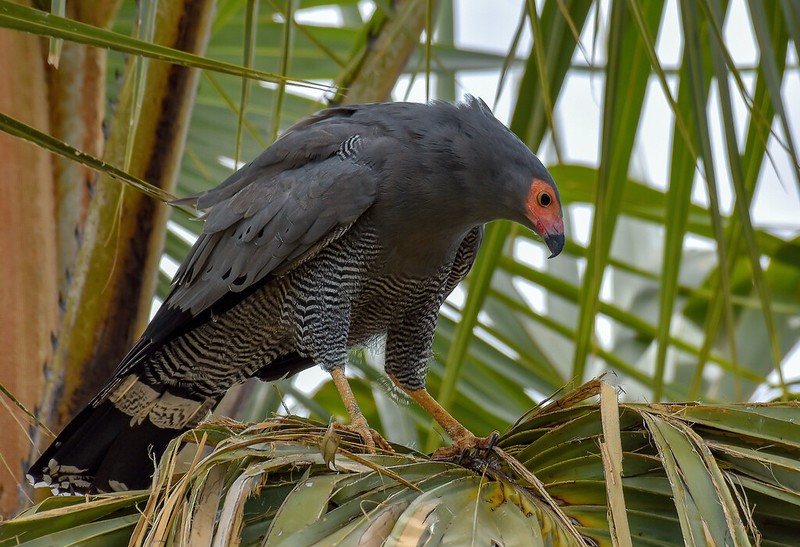
August 15, 2024
Uganda, often celebrated as the “Pearl of Africa,” is not only known for its stunning landscapes and diverse wildlife but also for its beautiful lakes. These lakes are not just picturesque, but they also support a rich array of flora and fauna that contribute to the country’s ecological balance.
From the expansive Lake Victoria to the crater lakes of western Uganda, the biodiversity surrounding these water bodies is both fascinating and crucial to the environment. In this blog post, we’ll delve into the unique flora and fauna that thrive around Uganda’s lakes, highlighting their ecological significance and the experience they offer to nature lovers.
The Aquatic Ecosystems of Lake Victoria
 Lake Victoria, the largest lake in Africa and the second-largest freshwater lake in the world, is a vital ecosystem in Uganda. It supports a complex web of life, both within its waters and along its shores.
Lake Victoria, the largest lake in Africa and the second-largest freshwater lake in the world, is a vital ecosystem in Uganda. It supports a complex web of life, both within its waters and along its shores.
The lake is home to over 500 species of fish, with the Nile perch and the tilapia being the most economically significant. However, the lake’s ecosystem faces challenges due to invasive species and pollution, which have led to the decline of native fish populations.
Surrounding the lake, the flora includes papyrus swamps, which are crucial for filtering water and providing habitat for various species.
These swamps are home to the iconic shoebill stork, a prehistoric-looking bird that is a must-see for birdwatchers. The wetlands also support numerous other bird species, including the African jacana, the grey-headed gull, and the pied kingfisher.
The lake’s shoreline is dotted with islands that host unique ecosystems, such as the Ssese Islands. These islands have lush forests that are home to primates like vervet monkeys and a variety of butterfly species.
The interaction between the aquatic and terrestrial ecosystems around Lake Victoria creates a rich biodiversity that is both intriguing and vital for the local communities who rely on the lake for fishing and agriculture.
The Crater Lakes and Their Biodiversity
Western Uganda is known for its numerous crater lakes, formed by ancient volcanic activity. These lakes, such as Lake Bunyonyi and the Ndali-Kasenda crater lakes, are not only breathtakingly beautiful but also harbor unique species that have adapted to their specific environments.
Lake Bunyonyi, one of the deepest lakes in Africa, is surrounded by terraced hillsides and lush vegetation. The area is home to various bird species, making it a haven for birdwatchers.
Species such as the African harrier hawk, the heron, and the weaver bird can be spotted around the lake. The surrounding forests are also home to small mammals and a variety of amphibians and reptiles that thrive in the cool, moist environment.
The Ndali-Kasenda crater lakes are another example of Uganda’s unique landscapes. These lakes are surrounded by tropical forests, which are home to primates such as the black-and-white colobus monkey and the red-tailed monkey. The flora around these lakes includes dense forest cover with species like mahogany and fig trees, which provide habitat and food for the wildlife.

The Swamps and Wetlands of Lake Kyoga and Lake Albert
Lake Kyoga and Lake Albert, located in central and western Uganda respectively, are surrounded by extensive swampy areas that play a crucial role in supporting biodiversity. These wetlands are home to species that are specially adapted to wet environments, such as the sitatunga, a swamp-dwelling antelope known for its ability to move through waterlogged areas with ease.
The papyrus swamps around these lakes are also important breeding grounds for fish and provide habitat for birds like the papyrus gonolek and the white-winged warbler. The wetlands act as natural water filters, trapping sediments and nutrients, which help maintain the health of the lake ecosystems.
Lake Albert, which forms part of the Albertine Rift, is bordered by savannah and forested areas that are rich in wildlife. The lake itself is a crucial part of the local fishing economy, supporting species like the Nile tilapia and various types of catfish. The surrounding landscapes are home to large mammals such as elephants, buffaloes, and Uganda kobs, especially in the nearby Murchison Falls National Park.
The Role of Uganda’s Lakes in Conservation and Ecotourism
The flora and fauna surrounding Uganda’s lakes are not just important for ecological balance but also for conservation and ecotourism.
These lakes attract tourists from all over the world, providing opportunities for bird watching, fishing, and exploring the rich biodiversity. The revenue generated from tourism helps fund conservation efforts aimed at protecting these unique ecosystems.
Local communities around the lakes play a vital role in conservation through sustainable practices. Initiatives such as community-based tourism and conservation education help ensure that the natural beauty and biodiversity of Uganda’s lakes are preserved for future generations.
Moreover, the lakes serve as crucial water sources for both wildlife and human populations, underscoring their importance in maintaining the region’s biodiversity.
The ecosystems supported by these lakes are interconnected, with the health of one component affecting the others. This highlights the need for integrated conservation efforts that address the challenges facing these fragile environments.
Uganda’s lakes are more than just scenic wonders; they are vibrant ecosystems that support a diverse range of flora and fauna. From the aquatic life of Lake Victoria to the unique species around the crater lakes and the wetlands of Lake Kyoga and Lake Albert, these bodies of water are vital to the ecological health of the region.
As Uganda continues to develop its ecotourism potential, the conservation of these lakes and their surrounding environments will be crucial in preserving the country’s natural heritage. For travelers and nature enthusiasts, exploring the flora and fauna of Uganda’s lakes offers a deep and enriching experience, showcasing the incredible biodiversity that this part of Africa has to offer.



